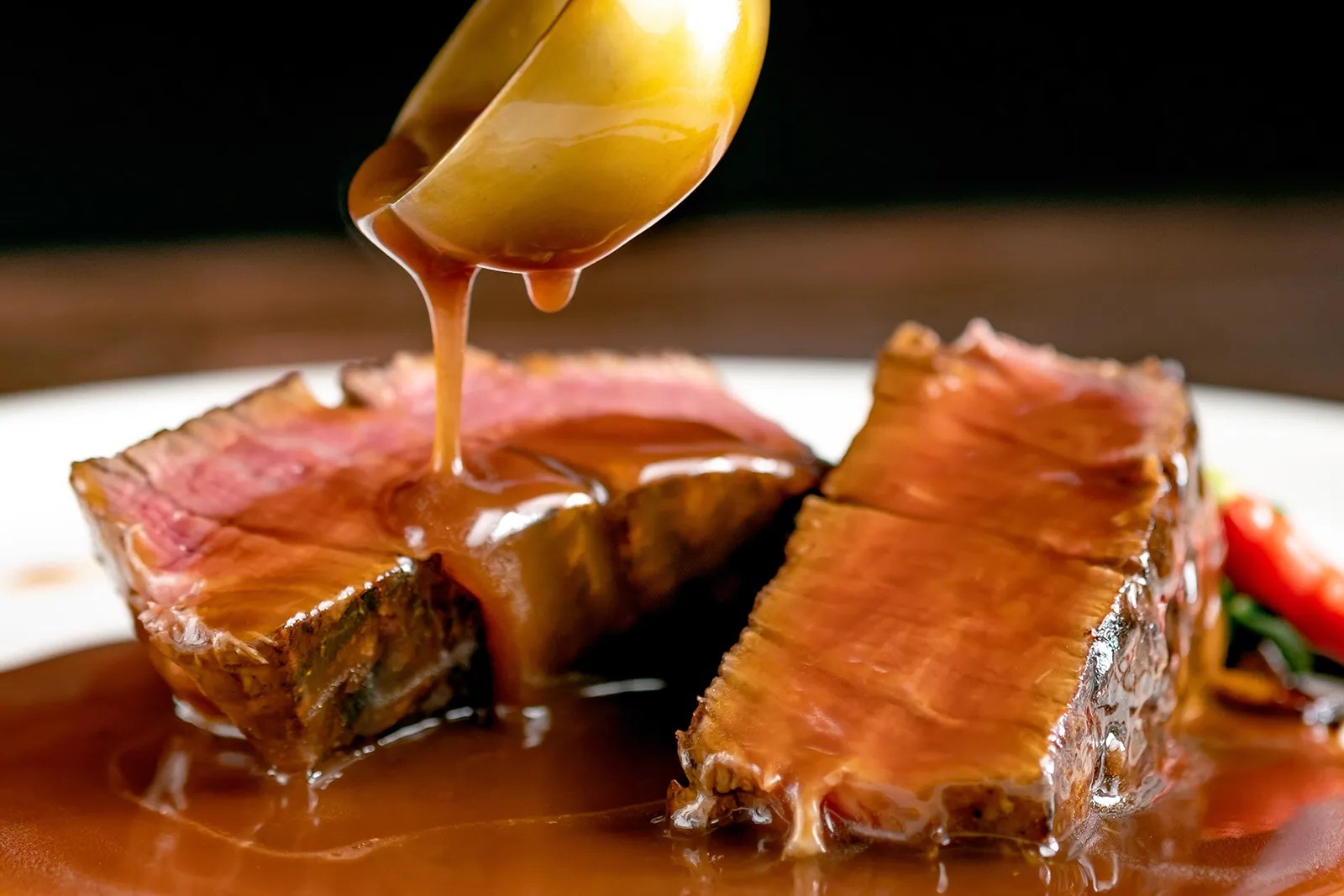
What is demiglace? Demiglace is a rich, flavorful sauce often used in French cuisine. Made by reducing brown stock and brown sauce, it creates a thick, glossy finish perfect for enhancing meats. This culinary gem adds depth to dishes, making them taste more complex and satisfying. Demiglace isn't just for fancy restaurants; home cooks can use it too. Whether drizzled over steak or mixed into soups, it elevates everyday meals. Curious about its origins, uses, and how to make it? Dive into these 27 facts about demiglace to become a sauce expert in no time.
What is Demiglace?
Demiglace is a rich, flavorful sauce often used in French cuisine. It's known for its deep, complex taste and velvety texture. Let's dive into some fascinating facts about this culinary gem.
-
Demiglace Origin: Originating in France, demiglace has been a staple in French kitchens for centuries. It’s a cornerstone of classic French cooking.
-
Name Meaning: The term "demiglace" comes from the French words "demi" (half) and "glace" (glaze), referring to its thick, glossy consistency.
-
Base Ingredients: Traditional demiglace is made from a mixture of brown stock (usually veal or beef) and Espagnole sauce, one of the five mother sauces in French cuisine.
How is Demiglace Made?
Creating demiglace is a labor-intensive process that requires patience and precision. Here are some key steps and facts about its preparation.
-
Long Simmering Time: The sauce is simmered for hours, sometimes even days, to achieve its rich flavor and thick texture.
-
Reduction Process: Demiglace involves reducing the liquid by half or more, concentrating the flavors and creating a thick, syrupy consistency.
-
Straining: After simmering, the sauce is strained to remove any solids, ensuring a smooth, velvety texture.
Uses of Demiglace
Demiglace is incredibly versatile and can elevate many dishes. Here’s how it’s commonly used in cooking.
-
Sauce Base: Often used as a base for other sauces, such as mushroom or red wine sauce, adding depth and richness.
-
Meat Glaze: Perfect for glazing meats like steak, lamb, or pork, giving them a beautiful, shiny finish and enhanced flavor.
-
Soup Enhancer: A small amount can be added to soups and stews to intensify the flavor.
Nutritional Facts
While demiglace is delicious, it’s also important to know its nutritional aspects.
-
Caloric Content: Demiglace is calorie-dense due to its concentrated nature. A small amount goes a long way.
-
Protein Source: Made from meat stock, it contains a good amount of protein.
-
Low in Carbs: It’s relatively low in carbohydrates, making it suitable for low-carb diets.
Fun Facts about Demiglace
There are some interesting tidbits about demiglace that might surprise you.
-
Michelin Star Favorite: Many Michelin-starred chefs use demiglace in their signature dishes.
-
Home Cooking: While traditionally made in professional kitchens, home cooks are increasingly making their own demiglace.
-
Store-Bought Options: For convenience, there are high-quality store-bought versions available.
Demiglace in Different Cuisines
Though French in origin, demiglace has found its way into various cuisines around the world.
-
Japanese Cuisine: In Japan, demiglace is used in dishes like Hayashi rice, a popular comfort food.
-
American Fusion: American chefs often incorporate demiglace into fusion dishes, blending it with local flavors.
-
Italian Influence: Some Italian recipes use demiglace to add depth to pasta sauces and risottos.
Demiglace Variations
There are several variations of demiglace, each with its unique twist.
-
Vegetarian Demiglace: Made using vegetable stock and mushrooms, offering a meat-free alternative.
-
Chicken Demiglace: Uses chicken stock instead of veal or beef, resulting in a lighter flavor.
-
Seafood Demiglace: Made from fish stock, perfect for enhancing seafood dishes.
Tips for Making Demiglace
Making demiglace at home can be rewarding. Here are some tips to help you succeed.
-
Quality Stock: Start with high-quality stock for the best flavor.
-
Patience is Key: Don’t rush the reduction process; slow and steady wins the race.
-
Flavor Boosters: Add aromatics like garlic, thyme, and bay leaves for extra depth.
Storing Demiglace
Proper storage is essential to maintain the quality of your demiglace.
-
Refrigeration: Store in an airtight container in the fridge for up to a week.
-
Freezing: Freeze in ice cube trays for easy portioning and long-term storage.
-
Reheating: Gently reheat on the stove, adding a splash of water if it’s too thick.
The Final Scoop on Demiglace
Demiglace is a culinary gem that adds depth and richness to dishes. This sauce, with its roots in French cuisine, has found its way into kitchens worldwide. Made by reducing brown stock and brown sauce, it’s a labor of love that pays off in flavor. Whether you’re a home cook or a professional chef, mastering demiglace can elevate your cooking game.
Remember, patience is key when making demiglace. The slow reduction process is what intensifies the flavors. Don’t rush it. Use quality ingredients for the best results. Beef or veal bones, fresh vegetables, and a good red wine can make all the difference.
Experiment with demiglace in various recipes. From enhancing a simple steak to creating a base for soups and stews, its versatility is unmatched. So, roll up your sleeves, get cooking, and let demiglace transform your meals.
Was this page helpful?
Our commitment to delivering trustworthy and engaging content is at the heart of what we do. Each fact on our site is contributed by real users like you, bringing a wealth of diverse insights and information. To ensure the highest standards of accuracy and reliability, our dedicated editors meticulously review each submission. This process guarantees that the facts we share are not only fascinating but also credible. Trust in our commitment to quality and authenticity as you explore and learn with us.
